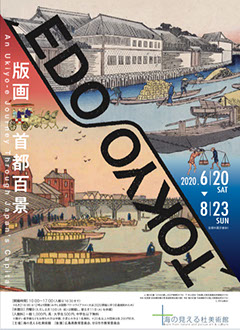Exhibitions
Edo⇔Tokyo: An Ukiyo-e Journey Through Japan’s Capital
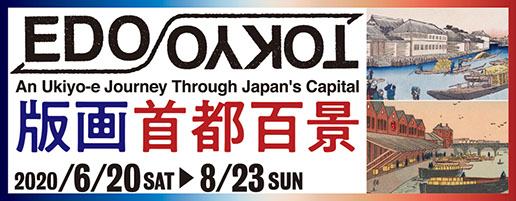
Welcome to Edo⇔Tokyo: An Ukiyo-e Journey Through Japan’s Capital, an exhibition that uses ukiyo-e prints from Umi-Mori Art Museum’s collection to explore the changing face of Japan’s capital city from the Edo period through to the Meiji period.
Edo was once a regional castle town, but it developed rapidly following the establishment of the Tokugawa shogunate in 1603 (Keicho 8). By the 18th century, it had become a major urban area with over one million inhabitants. This process also led to the emergence of several famous places within Edo. In the latter half of the 18th century, these places were depicted in popular woodblock prints known as meisho-e. Artists like Katsushika Hokusai (1760–1849) and Utagawa Hiroshige I (1797–1858) now captured the imaginations of the Japanese people with their skillful depictions of Edo’s sprawl, bustle and atmosphere.
The Edo period ended in 1868 with the Taisei Hokan, when power was transferred back to the Emperor. This ushered in a new era known as the Meiji period. Edo was also renamed Tokyo at this time. Various symbols of modernization now sprung up across the new capital, including Western-style architecture and railroads. These were represented vividly in woodblock prints known as kaika-e, or ‘enlightenment pictures,’ a genre that responded to a growing public interest in the modernization process. At the same time, artists continued to produce works steeped in the traditions of Edo’s meisho-e, as epitomized by Famous Places in Tokyo, a series of works by Utagawa Hiroshige III (1842-1894). Kobayashi Kiyochika (1847–1915) and his pupil Inoue Yasuji (1864–1889) took these traditions and infused them with western-style methods of depicting light and shadows. Known as kosen-ga, their landscape prints captured the new atmosphere of Tokyo’s streets.
This exhibition is divided into three chapters. These take the visitor on a journey through the capital from the end of the Edo period to the start of the Meiji period. Chapter One is titled “Scenes of Edo: The Metropolis As Portrayed in Ukiyo-e” This introduces uki-e (‘perspective pictures’), or early examples of ukiyo-e depicting famous places. These are featured alongside works by Utagawa Hiroshige I. Chapter Two is titled “Scenes of Modernization: Kaika-e and the New Famous Places” This shines a spotlight on ‘enlightenment pictures.’ Chapter Three is titled “Scenes of Tokyo: Hiroshige III and Inoue Yasuji” This introduces meisho-e pictures by Hiroshige III and kosen-ga by Inoue Yasuji. All these works portray Edo/Tokyo as it went though a period of rapid change. They encapsulate the feelings roused by this extraordinary metropolis, from the lure of Edo’s lively streets to the excitement of modernization and the wistful nostalgia for a vanishing world.
We hope you enjoy your journey through this diverse and enchanting city, as revealed by the masters of ukiyo-e.
Venue: Umi-Mori Art Museum (10701 Kamegaoka, Ohno, Hatsukaichi, Hiroshima)
With the support of: Hiroshima Board of Education and Hatsukaichi City Board of Education
Dates: Saturday, July 20, 2020 to Sunday, August 23, 2020
Hours: 10:00-17:00 (Last entry: 16:30)
Closed: Monday (However, the museum will be open the Monday of August 10), Tuesday of August 11
Admission:
General admission: 1,000 yen
High school/university students: 500 yen
Junior high school students and younger: Free
*Admission is half price for people with disability certificates, etc. One accompany person is admitted free of charge.
*Groups of 20 or over will receive a discount of 200 yen per person.
Chapter 1
Scenes of Edo: The Metropolis As Portrayed in Ukiyo-e
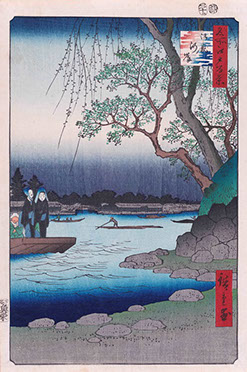
Famous Places of the Eastern Capital:
Fish Market at Nihonbashi
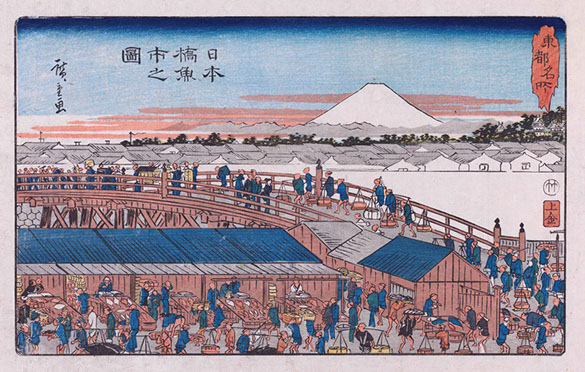
Utagawa Hiroshige
One Hundred Famous Views of Edo: Ommayagashi
Edo period, Ansei 4 (1857)
Chapter 2
Scenes of Modernization: Kaika-e and the New Famous Places
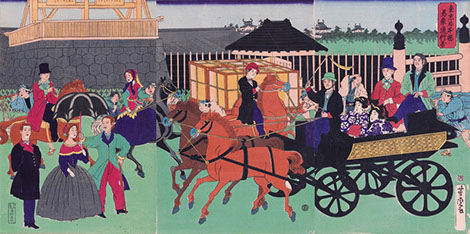
View of a Thoroughfare for Horse-drawn Carriages in Nihonbashi, Tokyo
Meiji 2 (1869)
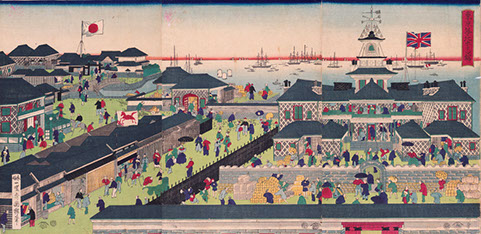
Hotel in Tsukiji, Tokyo
Meiji 2 (1869)
Chapter 3
Scenes of Tokyo: Hiroshige III and Inoue Yasuji
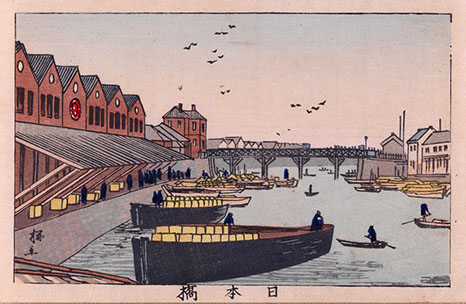
Nihombashi(True Pictures of Famous Places in Tokyo)
Meiji 14-22 (1881-89)
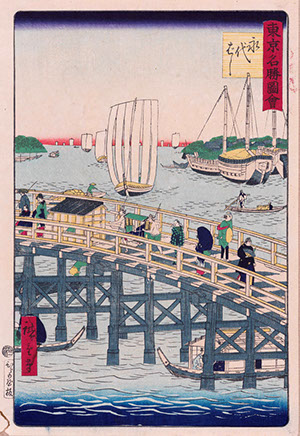
Meiji period, 19th century



